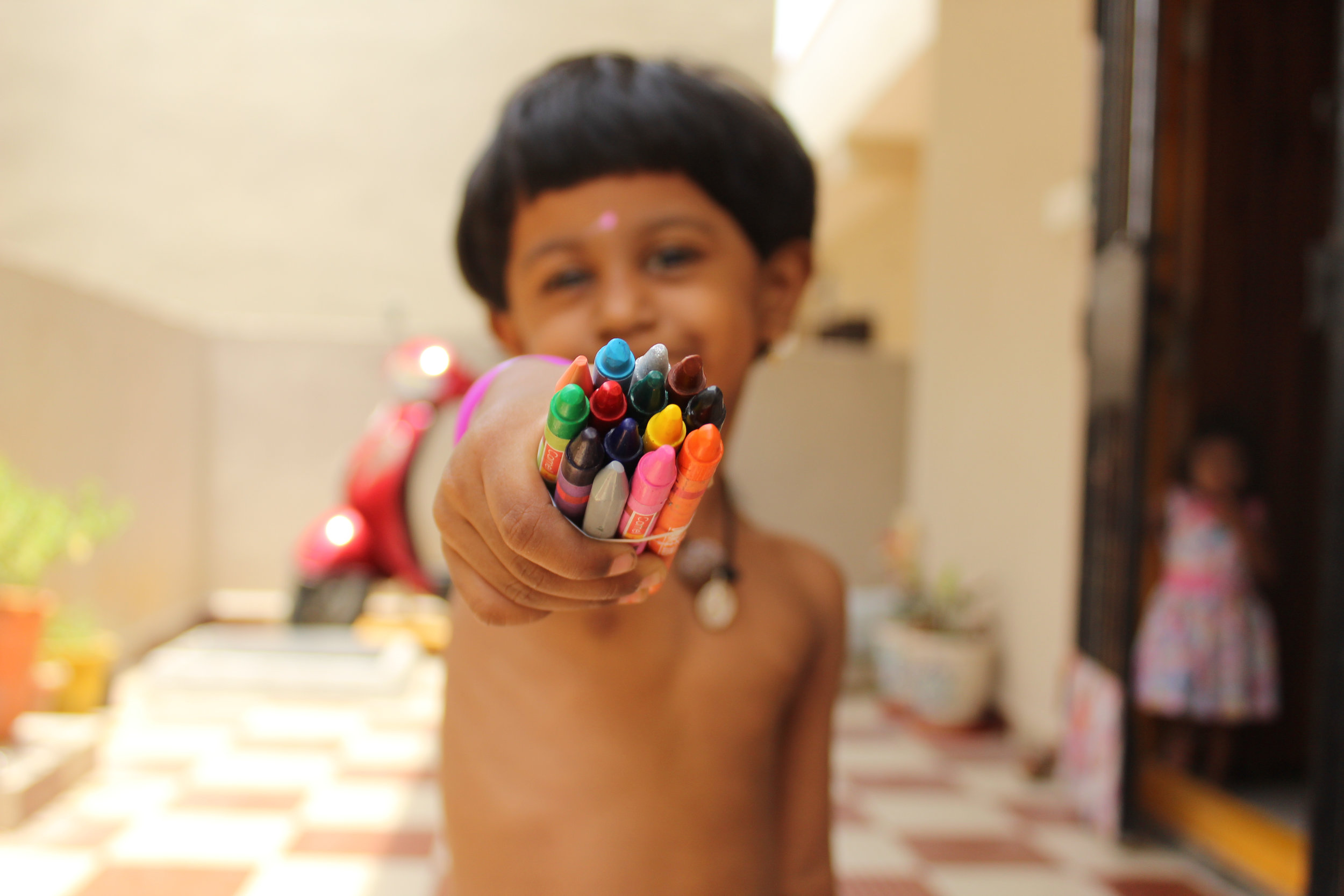Teaching Children to Share
Asking for a turn once someone else is done with something is a life skill. As an adult that is exactly what we do. We ask for a turn. We don’t set a timer or force the other person to give something up because they’re taking too long. When a child “grabs” a toy from another we can choose to see this as a call for help in learning how to share. Rather than using a convoluted “sharing plan", we can teach the child a safe way to get a turn while building important social skills.
When a child “grabs” an item, assume the child has a positive intent and is making a mistake, rather than blaming them for misbehaving. Do this to teach that making a mistake is okay:
Say to the child that grabbed, “Oops, did you want a turn to play with that?
Give the item back to the other child.
Have the waiting child say, “Can I have a turn when you are done with that?”
Often the child says, “Yes, they can have a turn when I’m done." It is hard for a child to wait for a turn, so the waiting child will need your help with the waiting process.
Ask the waiting child, “What are you going to play with until it is your turn?”
Encourage them with, “You can do this. I know it is hard to wait, but you’ve got this." Then help them find another toy to play with.
As they are handling the waiting calmly and playing with something else, bring awareness to how they are waiting and handling it. Say, “Look at you! You are waiting your turn. Way to go!” This paints a picture in their mind of what waiting looks like and they can use this image later when the opportunity to share happens again.
Sometimes the other child says, “No” when asked if the waiting child can have a turn when they are done. This is often because they think they have to give it up right now.
Tell the playing child, “You don't have to be done with it right now, he/she will wait until you are done playing with it.”
Say to the waiting child, “He/she isn't done with it yet. We will watch to see when they are done, so you can have a turn."
Then stay with the waiting child to coach them through the waiting process. They will see that they can handle waiting. This is good practice for learning how to wait for a turn. Children need to practice to learn a new skill.
It is important to stick with this for a bit because the child who asked for a turn needs to see that their words have power and that asking for a turn is a better skill than grabbing and taking the item.
Often the playing child will give the item to the asking child right away. If that happens, respond as follows:
Say, “That was so helpful! You remembered to give him/her a turn, way to go!”
Turn to the waiting child and say, “See, your words worked. Now it is your turn to play with the toy!”
Responding to the playing child that remembered to give the other child a turn teaches that listening to the words of others is a helpful thing to do. This response also paints a picture in the child’s mind of what listening to the words of others looks like.
Both children learn valuable social skills from participating in this process.
It is developmentally normal for children to have a hard time waiting. The concept of time is learned much later in life, so as you coach the child through the experience of not getting what they want immediately, it actually helps them build the life skill of how to wait. As we help them with the words and coach them through the upset, the words we say to them will become their inner speech. This means later in life they will have healthy words to say to themselves as they cope with waiting. Depending on the age of the child, you can adapt the number of words used. But it is still good language and vocabulary building, even for young kiddos. Sometimes you will have to be their voice if they don’t have language yet.
As you respond to a child, pay attention to your body language and the tone of your response. If you respond to the child with understanding and composure, you will soothe their brain and keep the child in the conscious, higher centers of the brain. This turns off the body’s distress system and allows them to handle waiting. If you respond with frustration or lecturing, it triggers the child’s brain to downshift into the unconscious lower centers of the brain and keeps the distress system on. They will use defensive strategies to hold on to what they want and won’t learn the new skill of handling it differently next time.
This process can seem labor intensive but is so important in helping to build your child’s brain. The blueprint for developing self-regulation for the rest of their life is done in the first three years of life. Think of this process in the same way you may help a child understand a new math concept or sound out a word so that they can read. You will have to support and coach them with this same concept time and time again so that the brain has a strong pathway to follow.
Information inspired from the work of Dr. Becky Bailey
Written by Jenny Barkac, EdD, ABD

